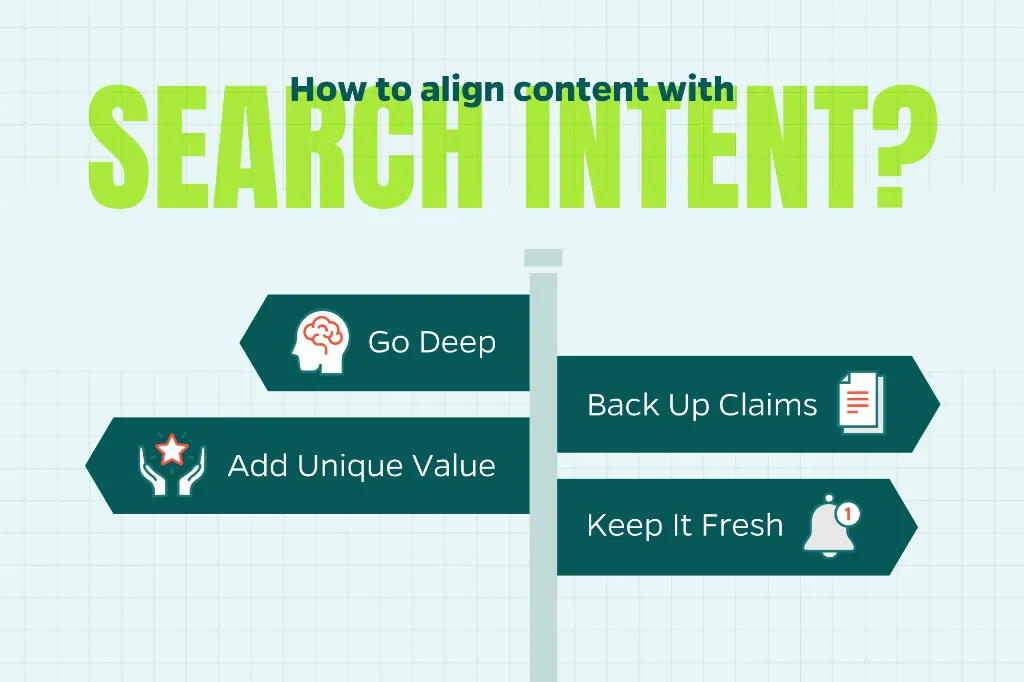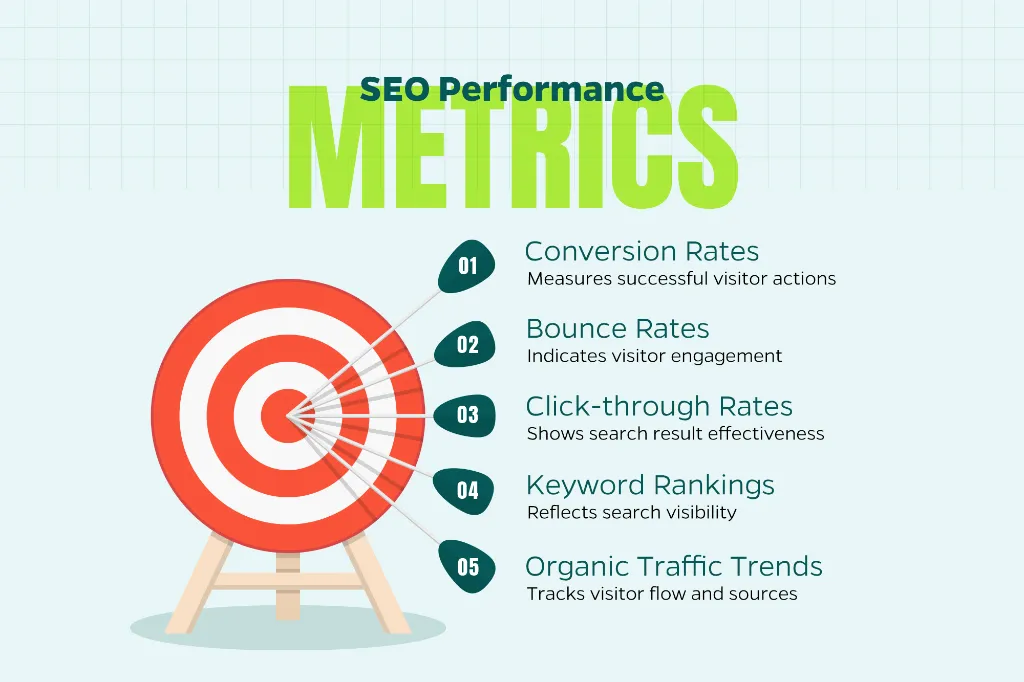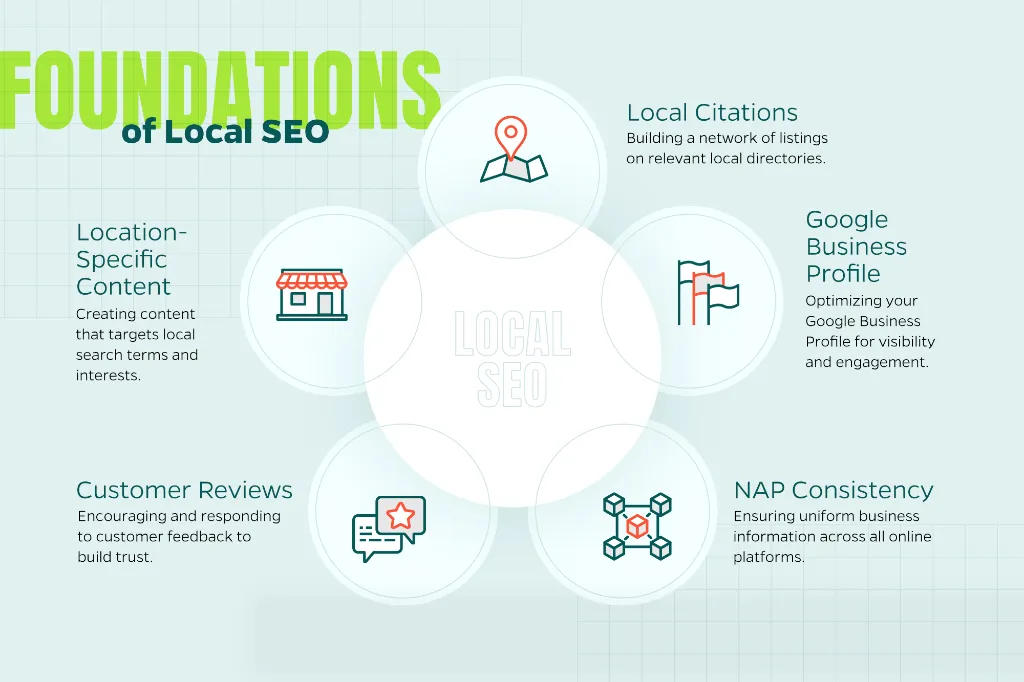Search engine optimization can be a game-changer for your business. It drives traffic and leads like few other marketing channels can. But it’s also a bit like walking a tightrope—one wrong step, and your rankings can take a serious hit.
We’ve seen countless businesses pour time and effort into SEO only to trip over avoidable mistakes that quietly sabotage their results. Yet, most of these pitfalls are completely preventable once you know what to watch.
In this post, we’ll walk through eight of the most common SEO mistakes, explain why they hurt your results, and give you practical fixes to keep your strategy on track.
1. Ignoring Search Intent (The Silent Ranking Killer)
Why it happens: It’s tempting to chase keywords with high search volume or low competition scores, but this approach completely misses what users want when they search.
Why it matters: Google’s entire mission revolves around delivering results that perfectly match user intent. Whether someone’s looking to learn something (“how to change a tire”), find a specific site (“YouTube login”), or make a purchase (“best hiking boots for beginners”), your content needs to align with that goal. Miss the mark, and users will bounce.
Real-world example: Let’s say you’re targeting “best project management tools” with a pushy product page full of sales copy. Users expecting an unbiased comparison guide will hit the back button immediately, sending a clear signal to Google that your page isn’t delivering what searchers want.
How to fix it:
- Study the top-ranking pages for your target keyword. What format are they using? What tone?
- Identify the search intent: informational (learning), navigational (finding a site), transactional (buying), or commercial investigation (researching before buying).
- Match your content format to the intent—comprehensive guides for informational queries, product pages for transactional ones.
Pro tip: Don’t forget about secondary intent. Someone searching “how to choose a CRM” might also want to see actual product comparisons. Include subtle comparisons and strategic links to relevant product pages to capture these users too.
Quick Action Checklist:
- Analyze top 3 results for your target keyword.
- Identify the primary search intent (informational, navigational, transactional, commercial).
- Audit 3 of your recent posts—do they match searcher intent?
- Rewrite one underperforming page to better match intent.

2. Overlooking Technical SEO (Your Site’s Hidden Foundation)
Why it happens: Technical SEO is like your website’s engine room—visitors can’t see it, so it’s easy to ignore. Your pages might look beautiful on the surface while harboring serious issues underneath.
Why it matters: Search engines need clean technical signals to crawl, index, and rank your site effectively. Even the most brilliant content can get buried if your technical foundation is shaky.
Common technical SEO pitfalls:
- Painfully slow load times from oversized images or bloated code.
- Pages accidentally blocked by robots.txt files or misconfigured canonical tags.
- Broken internal links creating frustrating 404 errors.
- Mobile usability problems that hurt your Core Web Vitals scores.
How to fix it:
- Schedule regular site audits using Google Search Console, Screaming Frog, or SEMrush.
- Prioritize mobile-first optimization (Google indexes mobile versions first).
- Implement schema markup to help search engines understand your content structure.
- Compress images and clean up unnecessary code.
Pro tip: Treat technical SEO like car maintenance. Quarterly checkups help you catch small issues before they become traffic-killing problems.
Quick Action Checklist:
- Run a site audit using Google Search Console (free) or SEMrush.
- Test your site’s mobile speed with Google PageSpeed Insights.
- Check for broken links using a tool like Broken Link Checker.
- Review your Core Web Vitals scores and fix one issue.
3. Keyword Stuffing (When More Isn’t Better)
Why it happens: Some businesses still cling to outdated advice that cramming more keywords into content automatically boosts rankings. Others worry they’ll “miss” the keyword if they don’t use it enough.
Why it matters: Google’s algorithms have evolved far beyond simple keyword counting. They use sophisticated semantic analysis to understand topics and context. Stuffing “organic dog food” into every other sentence makes your content sound stilted. Instead of paying off, it can trigger penalties.
What this looks like in practice: A 500-word blog post that mentions “organic dog food” 25 times reads like it was written by a malfunctioning robot. Readers notice, and so does Google.
How to fix it:
- Use keywords naturally, as you would in normal conversation.
- Include related terms and synonyms (like “natural ingredients,” “grain-free,” or “premium pet nutrition”) to reinforce your topic without over-optimization.
- Write for humans first, then optimize for search engines.
Pro tip: Read your content out loud. If a keyword feels forced, it’s probably stuffed. Rewrite until it flows naturally.
Quick Action Checklist:
- Pick your top 3 blog posts and read them aloud.
- Count keyword mentions—aim for 1-2% keyword density max.
- Add 3-5 related terms or synonyms to each post.
- Rewrite any sentences that sound robotic or unnatural.
4. Neglecting Content Quality (Quantity ≠ Quality)
Why it happens: In the race to publish more content, businesses often prioritize quantity over quality. They assume more pages will automatically translate into more traffic.
Why it matters: Google’s E-E-A-T framework (Experience, Expertise, Authoritativeness, Trustworthiness) heavily rewards content that’s genuinely valuable and credible. Thin, outdated, or inaccurate content not only gets filtered out of search results but can damage your brand reputation.
The quality checklist:
- Go deep: Answer the main question thoroughly, plus related questions your audience might have.
- Back up claims: Use reputable sources like industry studies, surveys, or expert research.
- Add unique value: Include first-hand insights, expert quotes, case studies, or original data.
- Keep it fresh: Regular updates signal to Google that your content stays relevant.

How to fix it:
- Audit your existing content for thin or outdated pieces.
- Update old posts with fresh statistics, new examples, and current best practices.
- Focus on creating fewer, higher-quality pieces rather than churning out mediocre content.
Pro tip: Set a quarterly calendar for content refreshes. Update statistics, swap outdated examples for current ones, and add new insights to keep your best content ranking strong.
Quick Action Checklist:
- Check 5 of your oldest blog posts for outdated information.
- Update at least 3 statistics or data points in one post.
- Add one original insight, case study, or expert quote to each post.
- Schedule quarterly content review dates in your calendar.
5. Forgetting About On-Page Optimization (The Low-Hanging Fruit)
Why it happens: When you’re focused on creating great content, it’s easy to skip the technical details of on-page SEO.
Why it matters: On-page elements are like road signs for both search engines and users. They help Google understand what your page is about and help users decide whether to click. Skip them, and you’re literally leaving rankings and traffic on the table.
Your on-page optimization checklist:
- Title tag: Include your target keyword naturally, keep it under 60 characters.
- Meta description: Write a unique, compelling summary under 155 characters that makes people want to click.
- Header tags (H1-H3): Organize your content logically with keywords used naturally.
- Internal links: Connect to relevant pages using descriptive anchor text.
- Image alt text: Describe images for accessibility while adding SEO context.
- URL structure: Keep URLs short, descriptive, and keyword friendly.
Pro tip: Treat every page like a first impression. Optimize it to grab attention in search results and guide users toward their next action, whether that’s reading more content or filling out a contact form.
Quick Action Checklist:
- Review title tags on your top 5 pages—are they under 60 characters?
- Write compelling meta descriptions for 3 underperforming pages.
- Add H1-H3 header structure to one unoptimized post.
- Include alt text for all images on your homepage.
6. Not Tracking and Measuring Results (Flying Blind)
Why it happens: Teams often launch SEO campaigns and assume everything’s working fine without regularly checking the data.
Why it matters: Without proper tracking, you have no idea what’s driving traffic, what’s failing, or where your biggest opportunities lie. You’re essentially throwing marketing budget into a black hole.
Essential metrics to monitor:
- Organic traffic trends and which pages are driving the most visitors
- Keyword rankings for your target terms
- Click-through rates from search results
- Bounce rates and time on page for SEO traffic
- Conversion rates from organic visitors

How to fix it:
- Set up Google Analytics 4 and Google Search Console properly
- Create monthly SEO reports tracking key metrics
- Set up goals or events to measure meaningful actions like form fills, downloads, or purchases
- Use tools like SEMrush or Ahrefs for more detailed keyword and competitor tracking
Pro tip: Check your SEO performance monthly, not quarterly or annually. Regular monitoring keeps your strategy agile and data driven.
Quick Action Checklist:
- Verify Google Analytics 4 and Search Console are connected to your site.
- Download this month’s organic traffic data and save as baseline as you review traffic month to month.
- Pick 2 conversion actions to track (contact forms, downloads, etc.) and set them up.
- Block 30 minutes in your calendar for next month’s SEO review.
7. Focusing Only on Rankings, Not Conversions (Missing the Point)
Why it happens: Rankings are easier to track and feel more tangible than conversions, so they often become the default success metric.
Why it matters: High rankings might stroke your ego, but if they’re not driving actual business results—leads, sales, or other valuable actions—your SEO strategy is failing where it counts most.
The conversion-focused approach:
- Target keywords that align with your sales funnel, not just high-volume vanity terms.
- Optimize landing pages for user experience and conversion potential.
- Include clear, compelling calls-to-action throughout your content.
- Match content to buyer journey stages.
Revealing example: A keyword like “affordable CRM software for small business” might bring 500 targeted visitors with a 5% conversion rate (25 leads). Compare that to a broad term like “CRM” bringing 5,000 visitors with a 0.1% conversion rate (5 leads). Which would you rather have?
Pro tip: Track conversion rates by landing page and traffic source. This reveals which keywords and pages are delivering real business value, not just vanity metrics.
Quick Action Checklist:
- Identify 5 keywords that align with your sales funnel stages.
- Review conversion rates for your top 10 organic landing pages.
- Add clear CTAs to 3 high-traffic pages lacking them.
- Set up conversion tracking for one key business action.
8. Ignoring Local SEO (If You Serve Local Customers)
Why it happens: Many businesses treat SEO as one-size-fits-all and completely overlook the unique requirements of local search.
Why it matters: Nearly half of all Google searches have local intent, and “near me” searches continue to skyrocket. If you serve customers in specific locations, local SEO isn’t optional—it’s essential.
Local SEO fundamentals:
- Google Business Profile: Claim, verify, and completely optimize your listing with accurate details, photos, and regular updates.
- NAP consistency: Ensure your Name, Address, and Phone number are identical across all online listings.
- Local citations: Build listings on relevant local directories and industry sites.
- Customer reviews: Actively encourage and respond to reviews from satisfied customers.
- Location-specific content: Create pages or posts targeting local terms like “best coffee shops in downtown Chicago.”

Pro tip: Keep your Google Business Profile active with fresh photos, updated hours, and posts about promotions or events. Active profiles get better visibility and more clicks.
Quick Action Checklist:
- Claim and verify your Google Business Profile (if not done).
- Audit your NAP (Name, Address, Phone) across 5 online directories.
- Ask 3 recent customers to leave Google reviews.
- Create one piece of location-specific content this month.
Wrapping Up: Your SEO Success Foundation
SEO can be incredibly powerful, but only when it’s built on solid fundamentals. By avoiding these eight common mistakes—ignoring search intent, neglecting technical issues, keyword stuffing, skimping on content quality, forgetting on-page optimization, not tracking results, chasing rankings over conversions, and overlooking local SEO—you’ll create a foundation for sustainable, long-term success.
Need more help? Reach out to our team at Straight North and we can give you the guidance to get your SEO game back on track.








